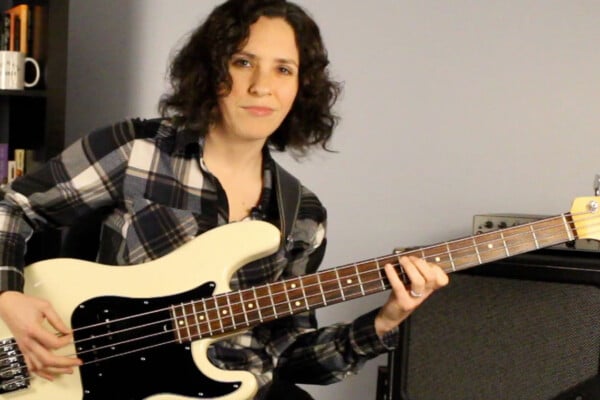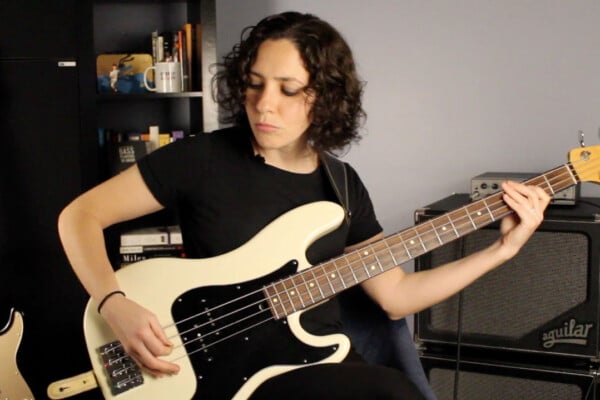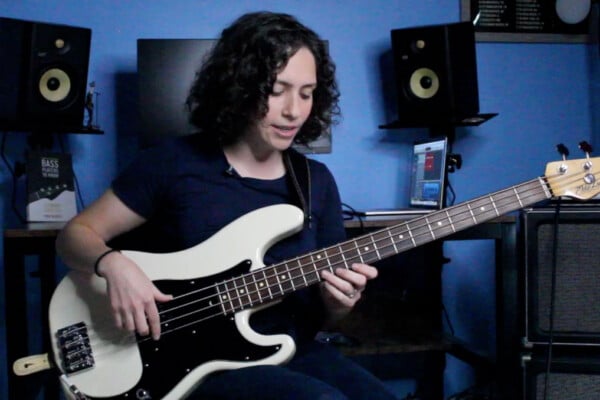Ask Damian Erskine: Reductive Practice
Q: I have a question regarding funk slap bass techniques. Are there any certain key techniques to doing this? I listen to a lot of bass-heavy funk lines in music and want to play them, but the speed at which they are able to do that stuff is incredible. I have often wondered if I am too heavy with my right hand and am pulling too hard on the upper string pop, thus slowing the whole thing down, but I can’t seem to get a decent sound otherwise. Is there any advice you could give me on this style of playing?
A: Well, I’m not much of a slapper (I can get by enough for the occasional recording session, etc. but it’s not my primary thing at all). But, I can make a few suggestions…
I find that when a student is having an issue with a technique or difficulty playing a technical passage, they tend not to get reductive enough in their practice.
By that, I mean that you should really take any thing you are working on and narrow it down to the smallest aspect of that thing before tackling any more.
Using slap bass as an example, I find a lot of folks try and go straight for the gusto: Victor, Marcus, Larry Graham licks and lines before getting a solid grasp of the fundamentals. Whether this is you or not, everyone can benefit from a reductive approach.
Let’s take this technique and reduce it down to it’s most basic concepts.
Thumb sound/articulation/facility and pop sound/articulation/facility.
Try taking each one of those and working them separate from each other before combining them.
Take just your thumb and really evaluate how to get the best sound out of it. (bouncing off of the string VS thumbing through the string. Angle of attack. Where on the string are you hitting (by the neck, over the neck, closer to the bridge). etc.
Now take your metronome and set it a nice mellow tempo. Practice simple quarter notes until you’re happy with the sound.
Bump it up to eighth notes… triplets, 16ths, 16th triplets, etc
Remember NOT to move ahead to the next level of difficulty until you can get what you are working on NOW to sound good!! Don’t practice bad technique OR bad tone!
Do the same with the popping. Break it down. How hard do you really need to pop to get the sound? Might it have more to do with Angle of attack and how much meat your grabbing with on your finger(s)?
Break out the metronome again and do the same thing using just one note at first!
The key is to only play one note or so in order to keep your focus on your time and tone. When you try and complicate the line, you may get distracted by harmony when our focus right now should be on the technical side of things.
Now combine the thumb and index finger (and then other popping fingers if you’re going for those techniques). Keep it simple at first, again Just play an octave!
Mix up your rhythms (thumb, index, thumb, index, etc and then. thumb, thumb, index, T,T,I, etc… Thumb, Index, Index, etc.), then incorporate open strings open, hammer, pluck.
Keep it slow until you’re happy with the sound and then do smaller sub-divisions.
This kind of practice works wonders for finger style players as well. The tighter your focus when practicing, the more you can fully explore ONE thing at a time (instead of mushing a million things together and never really getting any of them REALLY together).
I hope that helps!
Oh yeah, to answer your question. No, you don’t have to play hard to get a good sound! You just need to train your muscles to move properly through repetition and intentional practice sessions.
Have a question for Damian Erskine? Send it to [email protected]. Check out Damian’s instructional books, Right Hand Drive and The Improviser’s Path.



